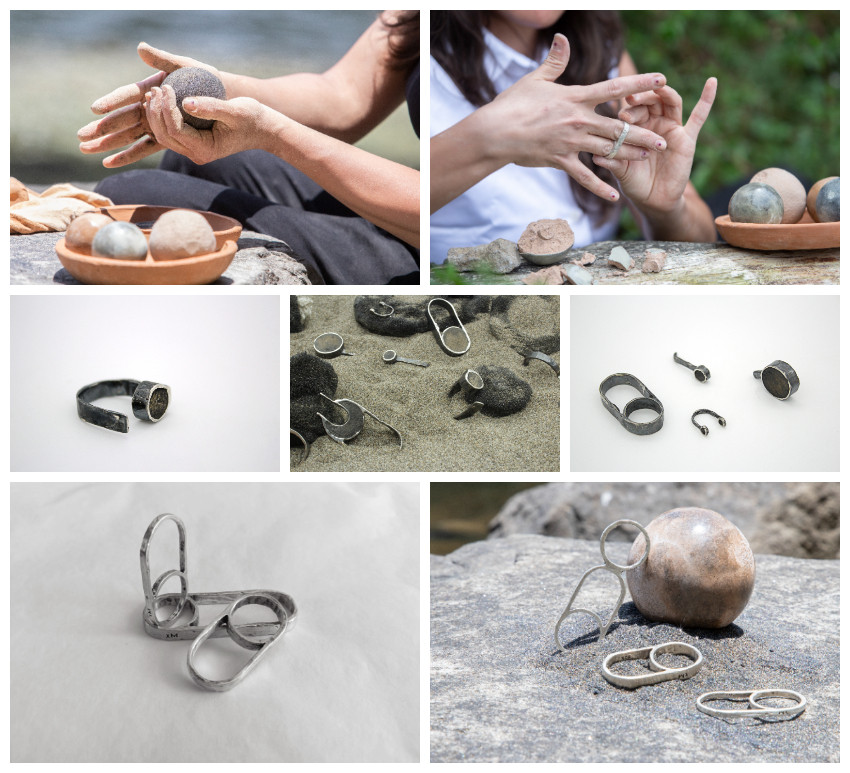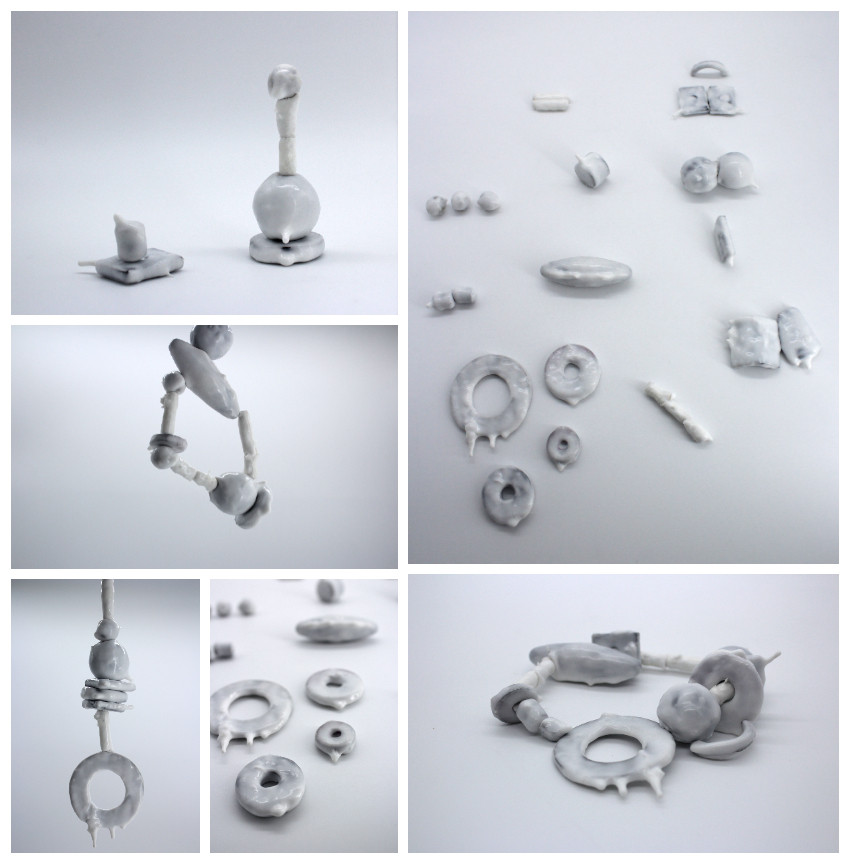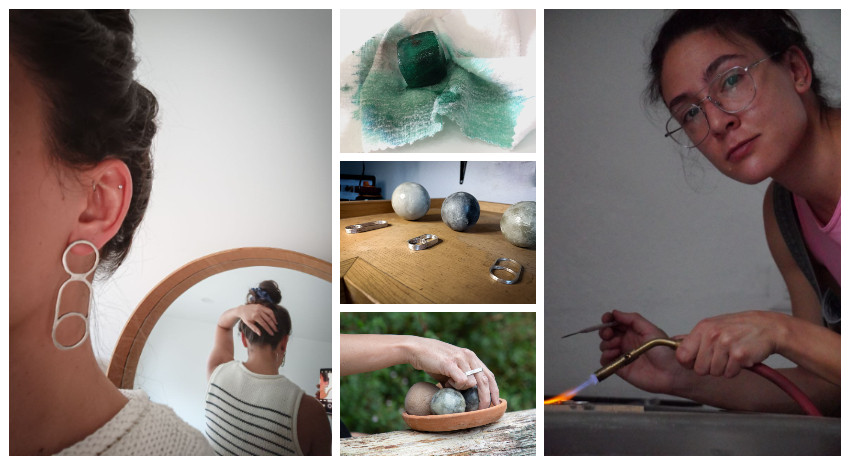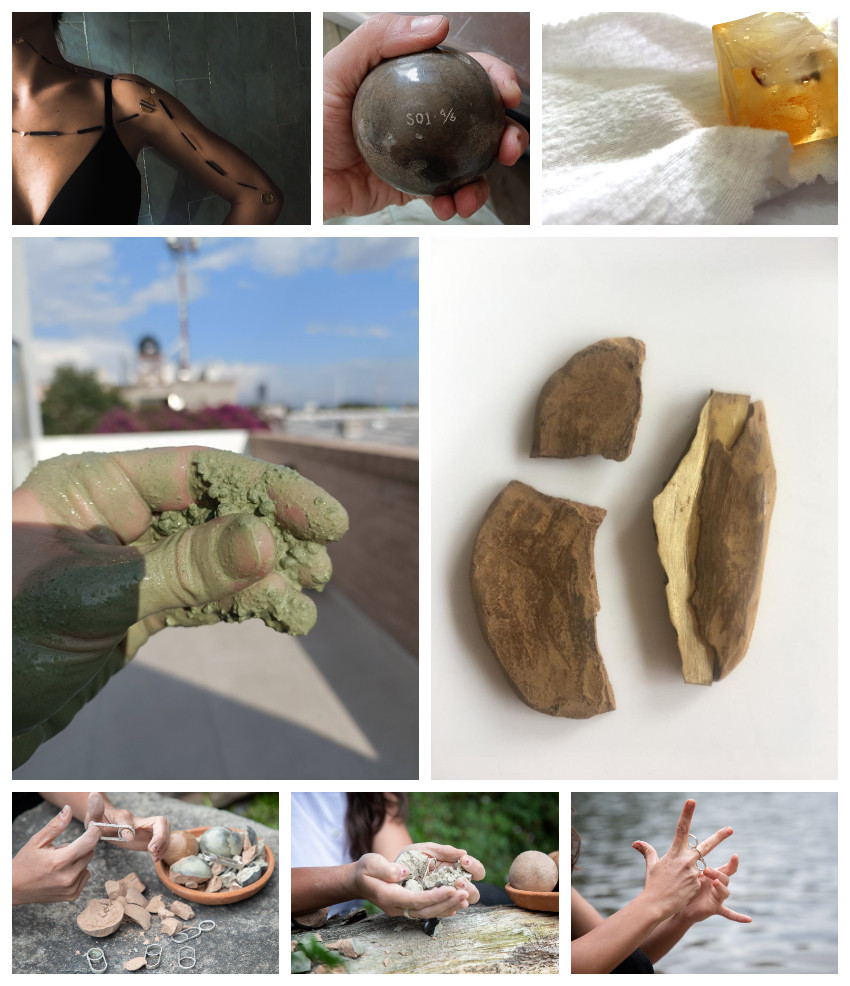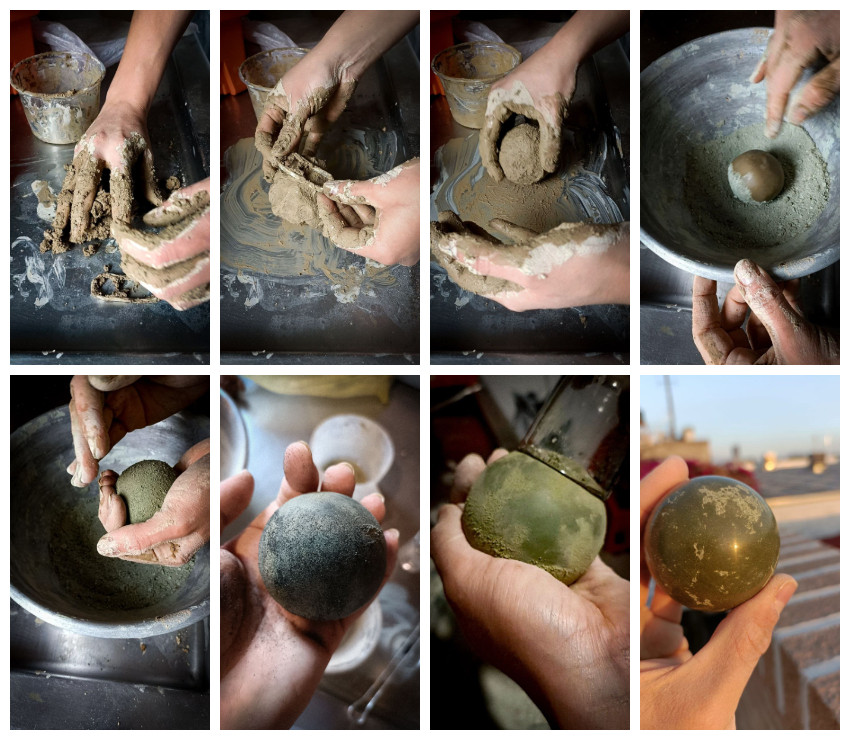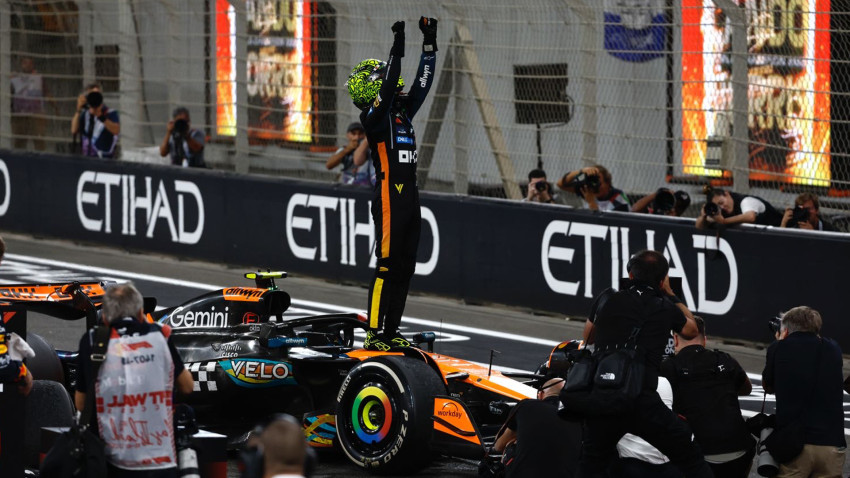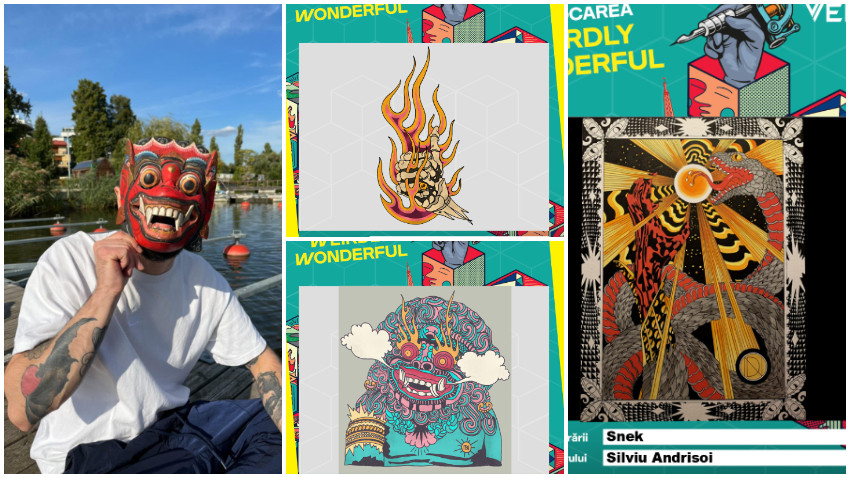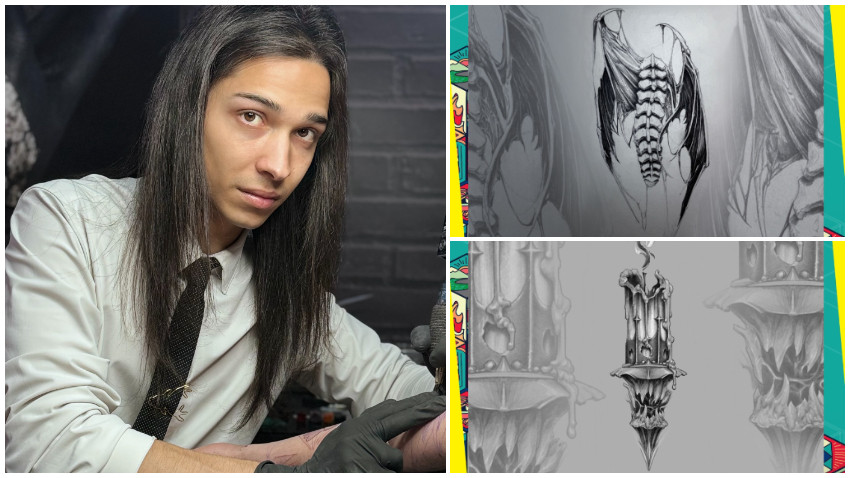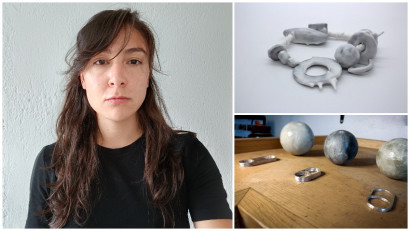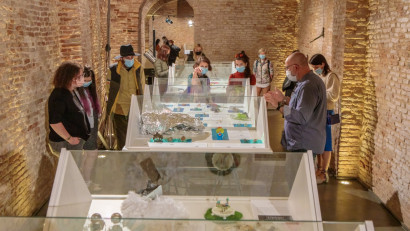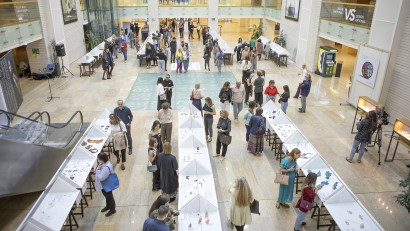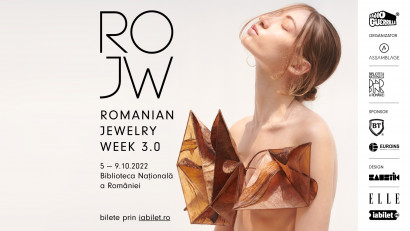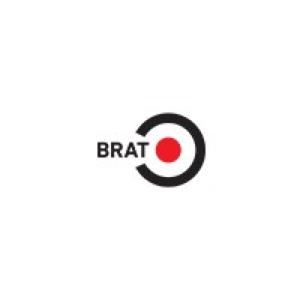Her father taught her to work with her hands and from him she learned to handle and use different tools. She was very young and doesn't remember exactly how she did everything, but she remembers how curious she was to watch him bringing various objects back to life. Jewelry designer Isabella Pérez Barrón took a bent towards craft and the desire to make products that celebrate her land, origins and relationships from her family. She didn't take from her people the need to create from life's adversity, but still, Isabella brings parts of Mexican culture and the DNA of her people into her jewelries.
"The context in which you grow up is going to influence your decisions, including creative decisions, all your life, not only because of relationships, but also because of the social, urban, cultural, economic and political context in which your mind and personality, and unconsciously, creativity, develop".
Romanian Jewelry Week 4.0 opens today, at 18:30, with the central exhibition at the National Library of Romania, which will be complemented by eight collective exhibitions. The 4th edition runs until Sunday, October 8, and presents more than 230 designers, schools, associations and collectives from more than 30 countries around the world.
Next, we discuss with designer Isabella Pérez Barrón about jewelry creation, about the Mexican culture as seen in her pieces and the relation Mexican women have with jewelry.
How your relationship with jewelry begun
Since I was a child I have been curious about crafts and tools. In 2017 my interest in melting things led me to take a lost wax casting workshop while living in Oaxaca. That was my first approach to jewelry in general. It was a very artisanal class, with handcraft techniques of modeling and casting that caused me to fall in love with fire and its processes and that made me begin to perceive the value given to jewelry as such.
In 2019 I returned to my hometown, CDMX. I decided to study the specialty of Contemporary Jewelry. Returning to Mexico City was a challenge for me. I came from a relationship and I had to reposition myself in space and in life, to figure out who I am and where I wanted to go.
I am still in the process of developing as a jewelry designer, but discovering that contemporary jewelry exists in the world, was the solution for me to join different skills and abilities that were completely isolated in my life. It has been a way of self-awareness and exploration, since then, I've been trying to make pieces that promote an interaction, and so far it has been the most beautiful way to connect with other people.
Your mentors. Stages of training as a jeweler
My first mentor is Katia Marmolejo, an artist who taught me the whole process, from the wax design to polishing the final piece in silver, all in a manual and artisanal way. The casting and centrifugation technique is stunning, powerful and also something beautiful. It is what I most enjoy doing because of the physical effort and the concentration you need.
In graduate school, Lore Lazard was my teacher, to this day she is a great support for the experience she has, her feedback, tips, techniques or advice, she always saves me and Maca, Martacarmela Sotelo who helped me understand that what I enjoy the most in my creative process, is the conceptual side; dismembering an idea, abstracting it and communicating with the result obtained, is something that fills me with satisfaction, besides the fact that she is also an architect and seeing her and knowing part of her processes in class, reminded me that there are different paths in life.
The first jewelry you created. What inspired you that time
I never know how to answer this question. The first pieces I made were exercises from the workshops I took, like all jewelers, I think. Even so, I have little time since I started making jewelry, however, “Piel con piel” emerged as a grad-school exercise, it was the first time I felt that I managed to do something deeper than achieving aesthetic beauty.
I was in my second semester of graduate school when the pandemic started in March 2020. Due to the difficulty of the situation and the restrictions imposed by Covid, the project was modified. The goal now was to design and create the concept and a contemporary jewelry collection with the theme "contact": contact in human relationships and its important relevance at that time.
As human beings, we are social creatures by nature. We cannot avoid it completely, our instinct forces us to find our role in society and in the best case, we will create strong bonds - or not - with skin-to-skin contact.
The "Piel con piel" collection represents, through magnets, this inevitable force that moves us throughout our lives, where we are part of a chain, seeking physical skin-to-skin contact; symbolized with a layer of silicone. These pieces allow the user to choose how to arrange all their pieces separately, playing with different shapes, placement and magnetic attraction power, depending on what they are looking for at any given moment.
What inspires you now. What themes you use to return to in your creations
Many things inspire me, I think it is both a cause and a consequence of my creative process. I like to observe objects, spaces and situations, being in nature, markets and being with friends, and sometimes out of nowhere, something clicks inside.
I don't know when I started doing it; I collect things: incense burners, jars, tools, toys, stones, seeds and so on. They usually come to me as gifts or as inheritance. I keep them because they have sentimental value but I display them as decoration in my home for the aesthetics they have... plus they help to start conversations.
Many times, I consciously move them around and examine them. I like to see their materiality, their weight, shape, how they are woven, carved; I like to exhibit things that are not decoration and I enjoy seeing how they look next to each other, they also provoke a feeling of nostalgia and affection that leads me to have moments of inspiration.
I think that the projects I have enjoyed the most and with which I have felt most satisfied, have this: visual aesthetics and emotional value.
Rediscovering Mexican culture in your jewelry
There are many things that inspire me about Mexico, but what inspires me the most is what we call Mexican folklore. It can be summarized as the creativity that we have culturally and that sometimes, it can be difficult to perceive being inside.
Maybe I am not as observant as someone who is considered "an observer", but I am very curious about the process of how the inventiveness with which problems and situations are solved in Mexico. Mexicans are very creative because creativity emerges in adversity. It is noticeable in many areas and I think it is enough to spend a couple of days in Mexico to notice it.
I have never lived in adversity, but I experienced this creative exploration with my dad. One of his chores at home was to repair things that got broken. When he could and gave me permission, I would go with him. He taught me how to use some tools, but what I liked most was to watch him and obviously, ask him everything. He usually had to adapt things to fulfill other functions, something very Mexican.... He would do it according to the characteristics of the object (shape, material, electrical conduction etc) and what he needed for the repair. He always managed to solve some damaged mechanism or fix something that had broken. I was 8 years old and I don't remember exactly what my role was there, but I do remember the curiosity I felt watching him do things.
The context in which you grow up is going to influence your decisions, including creative decisions, all your life, not only because of relationships, but also because of the social, urban, cultural, economic and political context in which your mind and personality, and unconsciously, creativity, develop. I like to think that people who create, especially with their hands, imbue those objects with a part of ourselves, so even if not literally, I want to think that my pieces will always bring something of Mexico.
The relationship of women in your country with jewelry
Currently, jewelry in Mexico has a value and appreciation very similar to that of other countries. I know that historically it was different, but I can talk about my experience: My grandmother with her first salary bought a jewelry set and later the same year, she bought one for her mother. My cousins and I have pieces that she left us. The more classic pieces like those that are inherited, are used for special occasions such as weddings, baptisms and dinners where the intention is to look formal, there are pieces that stand out for their precious materials or their volume and brightness that will make you stand out.
In general, jewelry in Mexico is valued for sentimental reasons and for its monetary value. Currently I have seen an increase in the use of different materials, especially synthetics such as resins, plastics and rubber for trendy or fashionable pieces, something that my grandmother surely did not live.
The things customers look for in your jewelry
In my little experience, what people appreciate and admire in my pieces is the story behind them and the creative process that led me to have the piece in front of them. They are pieces that people can connect with and feel identified with.
I think that gradually, if we see it as a phase in my process as a designer, I have been able to transmit from the final object, a discourse that manages to convey concepts and ideas that are common to all of us as human beings.
Your creative process: how an idea ends up shining in a piece of jewelry
I usually have the same creative process in all my facets as a designer. First, I start with an idea and make a list of everything that reminds me or connects me in one way or another to it. Then I group those concepts that have a similarity to each other and look for references in other disciplines. That helps me to be able to figure out what is really important in my idea. Sometimes it takes months and sometimes, unusually, it happens in a matter of days. It feels a bit random and sounds very systematic, but it's a back and forth, testing, returning until I find something within that exploration, which activates my emotional side; from there I take off.
The hardest thing for me is to get rid of an idea that I had already appropriated and worked on for a while.
Once all the parts click, I like to experiment and try different possibilities in terms of form, material, purpose (according to the design and its needs) until I feel satisfied with the result. The most beautiful thing is to show the process to someone who really connects with the piece and see the expression on their face.
Your participation at Romanian Jewelry Week
It often occurs to me that when I talk about my projects, products and creative processes, people don't understand my work, they question the feasibility and above all, the ability to commercialize my pieces and ideas. The truth is that this has made me feel that I am navigating alone in this creative part of my life.
Recently, talking about this with my brother, he emphasized how important it is and what a privilege it is to be able to show my work to the right people who are in the creative field, because this is the only way to appreciate and value everything that goes into the development and design of a piece.
I was really surprised to hear that I was accepted to be part of ROJW. I feel proud of the path I am tracing in this discipline. Personally, it is a way in which I have been able to reaffirm myself within the profession and learn more about my skills as well as my areas of opportunity.
I think it is important to open these spaces for creative people, because it is not only about exhibiting a final product or highlighting the potential of the artist in question, but contemporary jewelry mainly reflects about people: their experiences, postures, ideals, questionings, situations, etc. Contemporary art and design provoke conversation and debate which generates interaction, connection and even differences between people, but this drives us to develop more creativity, to question ourselves more and to form relevant connections.
The story of the collection you are participating with, Semillas
I was finishing a specialty in contemporary jewelry in Mexico City, had just ended a relationship and had been living in Oaxaca for 5 years. I felt the need to talk about the idea of returning to the nest. Reconnecting with my family, friends and feeling sheltered and sustained by "the lands" that have driven me to be who I am today.
Semillas has accompanied me for the last two years, it has been a project in constant development that was formed along with me and my personal development. As I was healing and understanding my process, my pieces were also taking shape in a more relevant way. I wanted to use meaningful elements, so I used colored earth and soil from my garden in Oaxaca, also black-iron sand from Veracruz, where my parents are from, to symbolize the earth that nurtures a seed and so, I also made the designs of the seeds in silver, manually and by hand.
The collection began as the final installment of the postgraduate course, but I was not sure how to solve the most important part of the whole concept: being in contact with the earth. Time went by and I focused on other activities and left jewelry as a hobby, but I was always thinking about Semillas. One day, talking with Javi, an artist friend, he told me to investigate the Japanese technique of dorodango.
Dorodango consists of making balls of soil by hand to the point of being able to polish them. The result is the reflection of the constant manipulation of the earth, it is a meditative process. This was just what I was looking for.
The silver pieces that are inside the sphere are the result of experimentation and abstraction of concepts that I initially had. They are the idea that slowly sprouted, like a seed, and that today are the core of the final pieces.
Your thoughts one the evolution of jewelry design in recent years
In my humble opinion, I believe that design in general is a reflection of a society. I can see that the jewelry market is divided between classic, contemporary or statement jewelry, and what is in trend, whether it is fast fashion or new and alternative proposals with different materials.
I think we have seen it in other segments of design, such as graphic or interior design, where the public can take time to adapt to the new, more specialized segments of it, to accept completely, or to a certain extent, accept the changes and sectors in which to make design and then, promote it. I like to think that the more specialized, the easier it is to find people to connect with.
Part of what social networks have done is to connect us (and disconnect us, but that's another topic) to people who have our same interests (that's why at least I came to the world of contemporary jewelry), and that makes that together, we give it more importance, more visibility and thus reach more people with common interests. I think it is a slow road, but in the end we cannot predict the speed at which everything advances, so I am hopeful that contemporary jewelry, in addition to being recognized as a blend between art, craft and design, can reach levels as high as other disciplines within the contemporary world.




